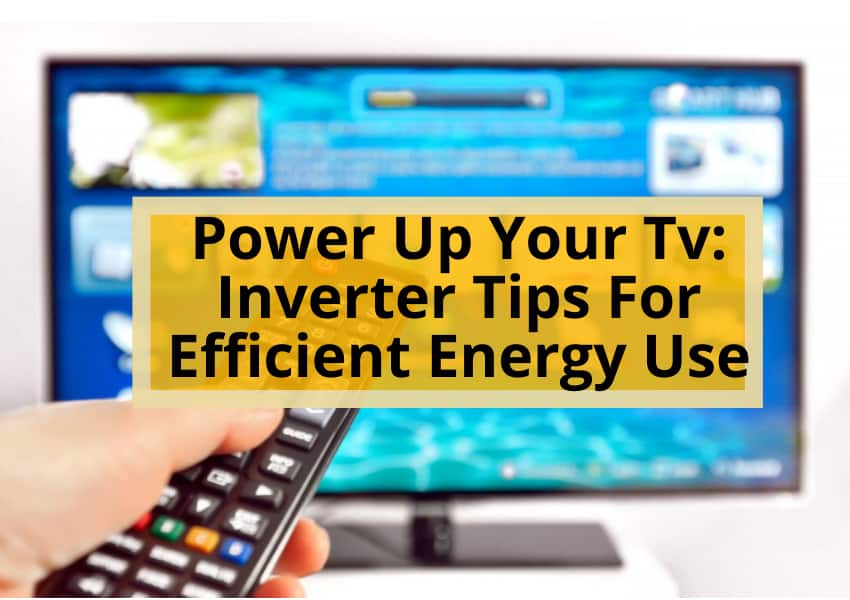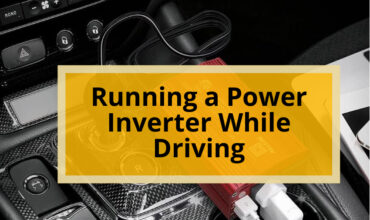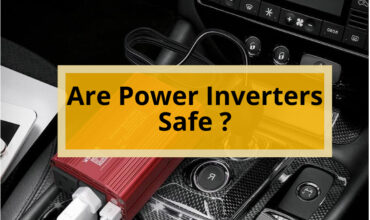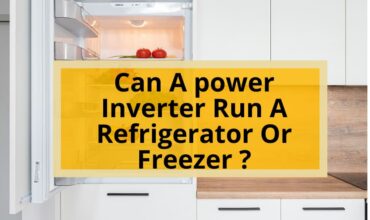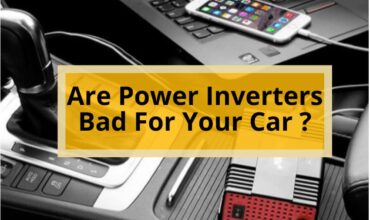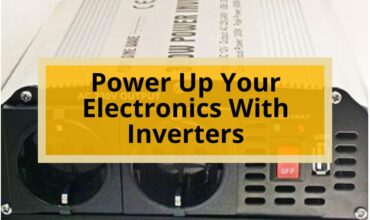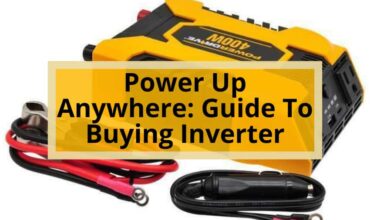In today’s world, where technology is an integral part of our lives, it’s essential to have a reliable source of power to keep our devices running. One such device that requires a constant supply of energy is the television. While traditional power sources like electricity are readily available, they may not always be accessible or reliable. This is where inverters come in handy. Inverters convert DC power from batteries or solar panels into AC power that can be used to power household appliances like TVs.
However, it’s crucial to use inverters efficiently to ensure optimal energy use and prevent damage to devices. To power up your TV with an inverter, it’s essential to consider the capacity of the inverter and the specific energy needs of your TV. Inverters come in different sizes and capacities, and it’s crucial to choose one that can handle the energy requirements of your TV.
Additionally, using short-distance wires to connect the inverter to the TV can help reduce energy loss and ensure efficient energy use. In this article, we’ll go over some tips for efficient energy use with your inverter, including calculating output requirements, using short-distance wires, and ensuring sufficient energy output to power multiple devices.
We’ll also take a closer look at the founder of WalkingSolar, Matthew Joseph Nandirio, and his expertise in solar technology.
Inverter Capacity
To ensure efficient energy use when powering up a TV, it is important to consider the inverter capacity.
A recommended 30% extra power than the total equipment should be available, and the exact wattage required to run the device should be calculated.
It is also important to keep in mind the inverter’s efficiency rating and the possibility of voltage drop. Inverter efficiency is a crucial factor to consider, as it determines the amount of power that is lost during the conversion process.
Additionally, if multiple devices are being used, it is important to ensure that the inverter has sufficient energy output to power all of them.
When calculating the inverter capacity, it is important to note that inverters are not 100% efficient. Therefore, a 20% energy loss should be considered in the formula to ensure that the equipment gets sufficient energy.
It is also important to keep buffered energy to deal with fluctuations in energy supply. If the inverter capacity is utilized above 80-90%, multiple devices should not be used.
Before connecting any device to the inverter, it is important to check the wattage of each device and ensure that the inverter output capacity is sufficient.
also read : Power Your Rv With Wind: Efficient & Cost Effective
Connecting Inverter
When connecting electronic devices to an inverter, it is important to consider the voltage drop that may occur and ensure that the TV is powered with a minimum voltage of 12V, as stated in the manufacturer manual. Using short-distance wires to connect the inverter can reduce energy loss and help maintain the required voltage. Additionally, the inverter’s output capacity should be checked before connecting the TV to ensure that it can handle the required wattage.
To prevent voltage drops and reduce energy loss, it’s essential to calculate the exact wattage required to run the TV and choose an inverter with 20% extra voltage to run the device. Inverter efficiency rating should also be considered, as inverters are not 100% efficient. Furthermore, it’s crucial to keep a buffered energy supply to deal with fluctuation in energy supply. The following table summarizes the key points to consider when connecting an inverter to a TV:
| Factors to Consider | Tips to Follow |
|---|---|
| Voltage drop prevention | Use short-distance wires to connect inverter |
| Manufacturer manual | Ensure TV is powered with a minimum voltage of 12V |
| Inverter output capacity | Check before connecting TV |
| Exact wattage required | Calculate to avoid energy loss |
| Inverter efficiency rating | Consider to avoid overloading inverter |
By following these tips, users can ensure efficient energy use when powering up their TVs with an inverter.
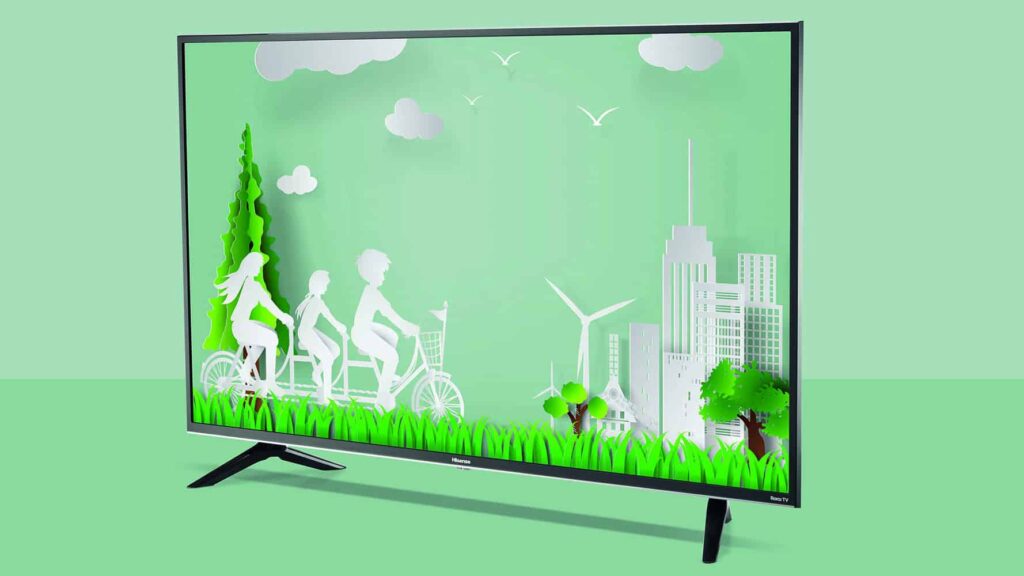
Calculating Output
Calculating the required wattage for a TV is like measuring the exact amount of ingredients needed for a recipe to ensure the final product turns out properly. To determine the appropriate inverter capacity, it is important to calculate the TV’s energy needs accurately. The inverter’s efficiency rating should be taken into consideration, along with the voltage drop that occurs when connecting electronic devices to the inverter.
A TV should be powered with a minimum voltage of 12V, and the manufacturer’s manual should be consulted to determine the exact voltage required. It is also important to check the wattage of each device before connecting it to the inverter, as multiple devices should not be used if the inverter’s capacity is utilized above 80-90%.
The size of the TV is also an important factor to be considered when calculating the required wattage. Larger TVs consume more energy, and therefore, it is essential to calculate the exact wattage required to run the equipment. The inverter should have 20% extra voltage to run the device, and there should be a 20% energy loss considered in the formula to ensure that the equipment receives sufficient energy.
In conclusion, calculating the output requirement for a TV is a critical step in ensuring efficient energy use and power efficiency. Incorporating these steps is essential to ensure that the inverter has sufficient energy output to power multiple devices. Keeping buffered energy to deal with fluctuations in energy supply is also important. Moreover, it is essential to note that the inverter can power household electronics and kitchen appliances, and its efficiency rating is based on power consumption.
The formula to calculate DC amperage is W ÷ V = A, and it is recommended to have an inverter with sufficient energy output to power multiple devices and compensate for energy loss.
Frequently Asked Questions
What is the lifespan of an inverter?
The lifespan of an inverter largely depends on its maintenance and usage. Proper maintenance tips include cleaning it regularly, avoiding overloading, using it within the recommended capacity, and checking for any defects or damages.
Can I connect multiple inverters to power a single device?
Connecting multiple inverters to power a single device has pros and cons. While it provides redundancy and scalability, compatibility with different devices can be an issue. It is important to consider the total power output, voltage compatibility, and energy loss before connecting multiple inverters.
Can an inverter be used to power a refrigerator or air conditioner?
An inverter with a capacity of at least 1500 watts is required to power a refrigerator, while an air conditioner requires an inverter with a minimum capacity of 2000 watts. Inverters convert DC to AC power and should have sufficient energy output to power multiple devices.
Can an inverter be used in a car or RV?
The benefits of using an inverter in a car or RV include the ability to power household electronics and kitchen appliances. When comparing inverter brands for mobile use, it is important to consider the inverter’s capacity, efficiency rating, and energy output to ensure sufficient power supply.
How do I maintain my inverter for optimal performance?
Cleaning techniques and troubleshooting methods are crucial for maintaining an inverter’s optimal performance. Regularly cleaning the unit and checking for loose connections can prevent malfunctions. Troubleshooting methods can identify and resolve issues, ensuring the inverter operates efficiently and effectively.
